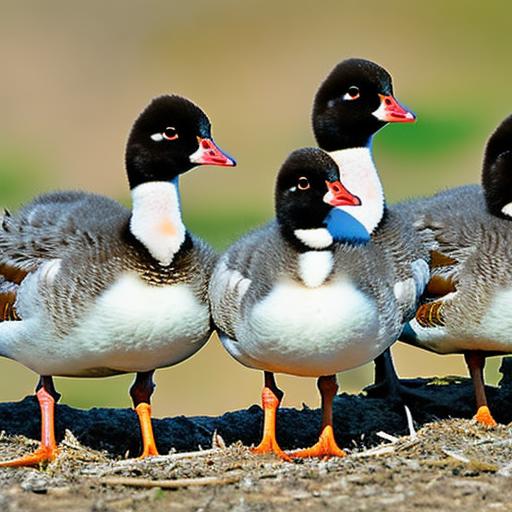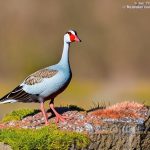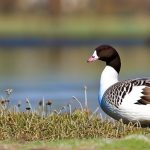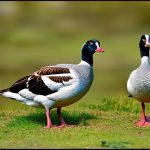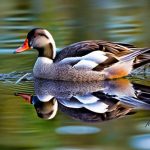Geese breeding season typically occurs in the spring and summer months when the weather is warmer and food sources are abundant. During this time, geese engage in a variety of behaviors to ensure successful reproduction. These behaviors include courtship displays, nest building, egg laying, incubation, and parental care. Geese are known for their strong pair bonds and will often mate for life.
Key Takeaways
- Geese have a breeding season that is influenced by hormones and environmental factors.
- Hormones play a crucial role in the breeding season of geese, affecting their behavior and physiology.
- Geese have specific nesting and egg-laying habits, and they carefully select their habitat for breeding.
- Mating behaviors and pair bonding are important aspects of geese breeding season, leading to the incubation and hatching of goslings.
- Parental care and protection of goslings are critical for their survival, and threats to geese breeding season include habitat loss and human disturbance.
The Role of Hormones in Geese Breeding Season
Hormones play a crucial role in triggering breeding behaviors in geese. Testosterone levels increase in males during the breeding season, which leads to changes in behavior such as increased aggression and territoriality. This hormone also stimulates the development of secondary sexual characteristics such as larger size and more vibrant plumage.
In females, estrogen levels increase during the breeding season, which triggers the development of reproductive organs and the production of eggs. This hormone also influences nesting behavior and maternal care. The hormonal changes in both males and females are essential for successful reproduction and the continuation of the species.
Nesting and Egg Laying Habits of Geese
Geese typically lay their eggs in nests on the ground or in trees. The female will lay one egg per day until she has a full clutch, which usually consists of 4-8 eggs. The female will then begin incubating the eggs to keep them warm and protect them from predators.
The nest is usually built in a secluded area near water, such as on an island or in tall grasses. The female will use materials such as grass, leaves, and feathers to construct the nest. The male will often stand guard nearby to protect the female and the nest from potential threats.
The Importance of Habitat Selection for Breeding Geese
Geese require specific habitats for successful breeding. They need access to water for swimming and finding food sources such as aquatic plants and insects. They also need areas with ample vegetation for nesting and protection from predators.
Human development and habitat destruction can negatively impact geese breeding success. Wetland drainage, urbanization, and the destruction of natural habitats can all reduce the availability of suitable breeding sites for geese. Pollution, such as water contamination from agricultural runoff, can also have detrimental effects on geese and their reproductive success.
Mating Behaviors and Pair Bonding in Geese
Geese engage in elaborate courtship displays to attract mates. These displays often involve head bobbing, wing flapping, and honking calls. Males will also engage in aggressive behaviors to establish dominance and win the attention of females.
Once paired, geese will remain together for life. They form strong pair bonds and will often return to the same breeding site year after year. This pair bond is reinforced through mutual grooming, preening, and other social behaviors.
Incubation and Hatching of Goslings
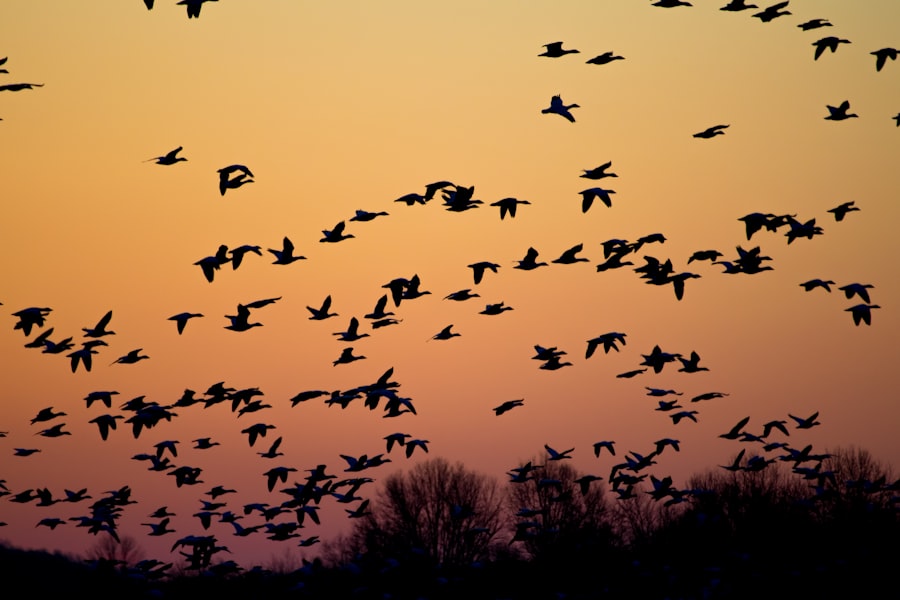
After the eggs are laid, they are incubated for around 28 days. The female will sit on the nest to keep the eggs warm while the male stands guard nearby. During this time, the female will rotate the eggs to ensure even heat distribution.
Once the eggs are ready to hatch, the goslings will begin to peck at the shell from inside. It can take several hours for a gosling to fully emerge from its shell. Once hatched, goslings are immediately able to walk and swim. They will follow their parents and learn important survival skills such as finding food and avoiding predators.
Parental Care and Protection of Goslings
Both parents play a role in caring for and protecting their goslings. They will lead their young to suitable feeding areas and teach them how to find food. They will also defend their goslings from predators such as foxes and raccoons.
Goslings are vulnerable to predation and require constant supervision. The parents will keep a close eye on their young and will often use vocalizations and body language to communicate with them. They will also provide warmth and shelter for the goslings, especially during inclement weather.
Challenges and Threats to Geese Breeding Season
Geese breeding season faces several challenges and threats that can impact their reproductive success. Habitat destruction, pollution, and climate change are major concerns. Wetland drainage and urbanization can destroy nesting sites and reduce the availability of food sources for geese. Pollution from agricultural runoff can contaminate water sources, making them unsuitable for geese and their young.
Predators such as foxes and raccoons can also pose a threat to goslings. These predators are known to raid nests and prey on young goslings. Invasive species such as feral cats and dogs can also have a negative impact on geese populations.
Geese Breeding Season and Human Interaction
Human activities can have both positive and negative impacts on geese breeding season. While some people enjoy watching geese and their young, others may inadvertently disturb them during this critical time. Activities such as boating, fishing, and recreational activities near nesting sites can disrupt geese and cause them to abandon their nests.
Feeding geese can also disrupt their natural feeding behaviors and lead to overpopulation. When geese become reliant on human-provided food, they may not seek out natural food sources, which can lead to malnutrition and other health issues.
Conservation Efforts to Protect Geese Breeding Season
Conservation organizations work to protect and restore habitats for breeding geese. They advocate for the preservation of wetlands, the creation of protected areas, and the reduction of pollution in water sources. These efforts help ensure that geese have suitable habitats for nesting, feeding, and raising their young.
Education and outreach efforts also aim to raise awareness about the importance of protecting geese breeding season. By educating the public about the behaviors and needs of geese during this time, people can better understand how their actions can impact these birds. This knowledge can lead to more responsible behavior and a greater appreciation for the natural world.
If you’re interested in learning more about breeding season for geese, you might find this article on “How to Care for Goslings” from Poultry Wizard quite informative. It provides valuable insights and practical tips on how to properly care for goslings during their early stages of life. Additionally, if you’re curious about the incubation period for goose eggs, Poultry Wizard has another helpful article that explores this topic in detail. You can find it here: “What is the Incubation Period for Goose Eggs?” Lastly, if you’re considering keeping guinea fowl alongside chickens, Poultry Wizard has an interesting article that discusses whether guinea fowl can live harmoniously with chickens. Check it out here: “Can Guinea Fowl Live with Chickens?”
FAQs
What is the breeding season for geese?
The breeding season for geese typically occurs in the spring, from March to May.
How do geese choose their mates?
Geese typically choose their mates through courtship rituals, which involve honking, head bobbing, and wing flapping.
How many eggs do geese lay during breeding season?
Geese typically lay between 4 to 8 eggs during the breeding season.
How long does it take for goose eggs to hatch?
It takes approximately 28 to 30 days for goose eggs to hatch.
Do geese mate for life?
Yes, geese are known to mate for life and will often return to the same nesting site year after year.
How do geese protect their nests during breeding season?
Geese will often aggressively defend their nests during breeding season, using their wings and beaks to fend off predators.
What is the role of the male goose during breeding season?
The male goose plays a crucial role in protecting the female and their nest during breeding season, as well as helping to incubate the eggs.
Meet Walter, the feathered-friend fanatic of Florida! Nestled in the sunshine state, Walter struts through life with his feathered companions, clucking his way to happiness. With a coop that’s fancier than a five-star hotel, he’s the Don Juan of the chicken world. When he’s not teaching his hens to do the cha-cha, you’ll find him in a heated debate with his prized rooster, Sir Clucks-a-Lot. Walter’s poultry passion is no yolk; he’s the sunny-side-up guy you never knew you needed in your flock of friends!

